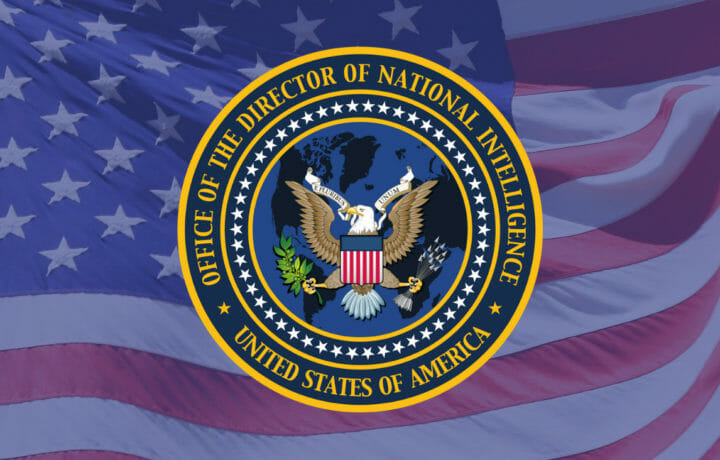Congress created the Office of the Director of National Intelligence (ODNI) and if currently proposed legislation passes, it will significantly shrink and shift the role of this major IC player. In a major legislative overhaul introduced by Senators Cotton, Risch, Rounds, Budd, and Lankford, the “Intelligence Community Efficiency and Effectiveness Act of 2025” marks a major change in the structure and oversight of U.S. intelligence operations. While preserving core national security functions, the bill says it seeks to eliminate redundancies, tightens spending, and redistributes responsibilities to enhance agility and accountability.
The Office of the Director of National Intelligence (ODNI) was created in 2004 through the Intelligence Reform and Terrorism Prevention Act (IRTPA), the legislative response to the 9/11 Commission’s findings that U.S. intelligence agencies had failed to effectively share information and coordinate their efforts. The commission called for stronger oversight and a unified approach to national intelligence, which led to establishing the Director of National Intelligence as the head of the entire Intelligence Community, with the mandate to integrate and synchronize activities across agencies like the CIA, NSA, and FBI. ODNI’s mission was to break down bureaucratic silos, improve information sharing, and provide strategic leadership over America’s intelligence enterprise in an increasingly complex security environment.
The latest legislative shift reduces the overall size of ODNI significantly, putting more responsibilities into the agencies themselves.
Here’s what the Bill says:
ODNI: Leaner and More Focused
- The Office of the Director of National Intelligence (ODNI) will shrink its mission scope, shedding several national intelligence centers, repealing semi‑annual reporting requirements, and removing authority to place personnel arbitrarily within new centers.
- Staffing caps are firmly set at 650 full-time equivalents, ensuring streamlined operations. Temporary task force roles won’t count toward this cap. To put the numbers in context, ODNI currently has 1,700-1,800 employees, although details from other IC agencies count toward these figures and the actual current break down of FTEs vs. details isn’t released.
Leadership Team Revamp
- The post of Principal Deputy DNI is retitled to Deputy DNI. Meanwhile, the position is being restructured into Assistant DNI roles focused on mission integration and policy and replacing the broader deputy role .
Centers of Gravity Shift
- The National Counterintelligence and Security Center transfers from ODNI to the FBI’s Counterintelligence Division within 180 days.
- The National Counterterrorism Center is redesigned into the National Counterterrorism and Counternarcotics Center, eliminating a strategic operational planning unit and removing its Senate confirmation requirement for leadership.
- Similarly, the National Counterproliferation and Biosecurity Center moves to the CIA, becoming the National Counterproliferation Center with narrowed objectives and funding review.
Intelligence Task Forces & Institutional Cuts
- The creation of temporary, mission-specific National Intelligence Task Forces—reportable to Congress after 60 days and dissolving within 540 days seeks to add nimbleness to the community.
- Dozens of offices and initiatives including the Intelligence Community Chief Data Officer, the Innovation and Malign Influence Centers, the Climate Security Advisory Council, and more are slated for elimination or wind‑down within 90 days.
Funding Discipline & Budget Restraint
- New prohibitions block National Intelligence Program (NIP) funds from academic or think tank partnerships unless aligned with Five Eyes intelligence members.
- A one-year moratorium is imposed on certain ODNI facility expenditures. Unneeded properties must be sold or divested .
- The National Intelligence University will cease operations within 180 days—risking a gap in leadership and tradecraft training .
What to Watch
- Implementation timeline: Key shifts, from center relocations to terminations, must occur within 90 to 180 days.
- Operational impacts: While the FBI and CIA will gain new roles, ODNI’s diminished footprint creates both opportunities and risks for collaboration and oversight.
- ODNI retains its role as the security clearance function of Security Executive Agent (SecEA). In that capacity it oversees the implementation and oversight of security clearance policies, including updates to the adjudicative guidelines. NCSC has served as the executive agent in performing these functions, but with NCSC moving to FBI and the SecEA role remaining in ODNI, there will likely be an administrative shift in how those oversight roles function.
The legislation isn’t final, and will face the typical pathway of review, committee mark-up in the Senate Intelligence Committee, and possible changes and tweaks as it seeks to gather compromise across the aisle.




